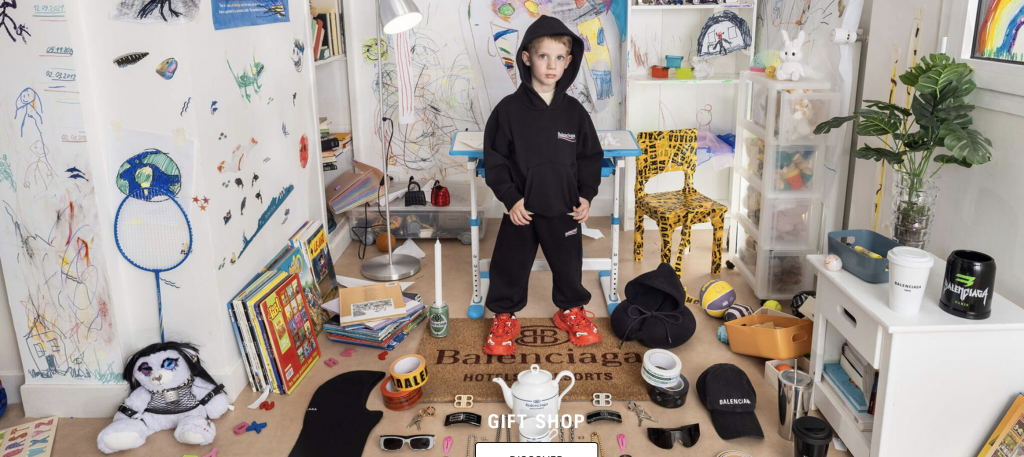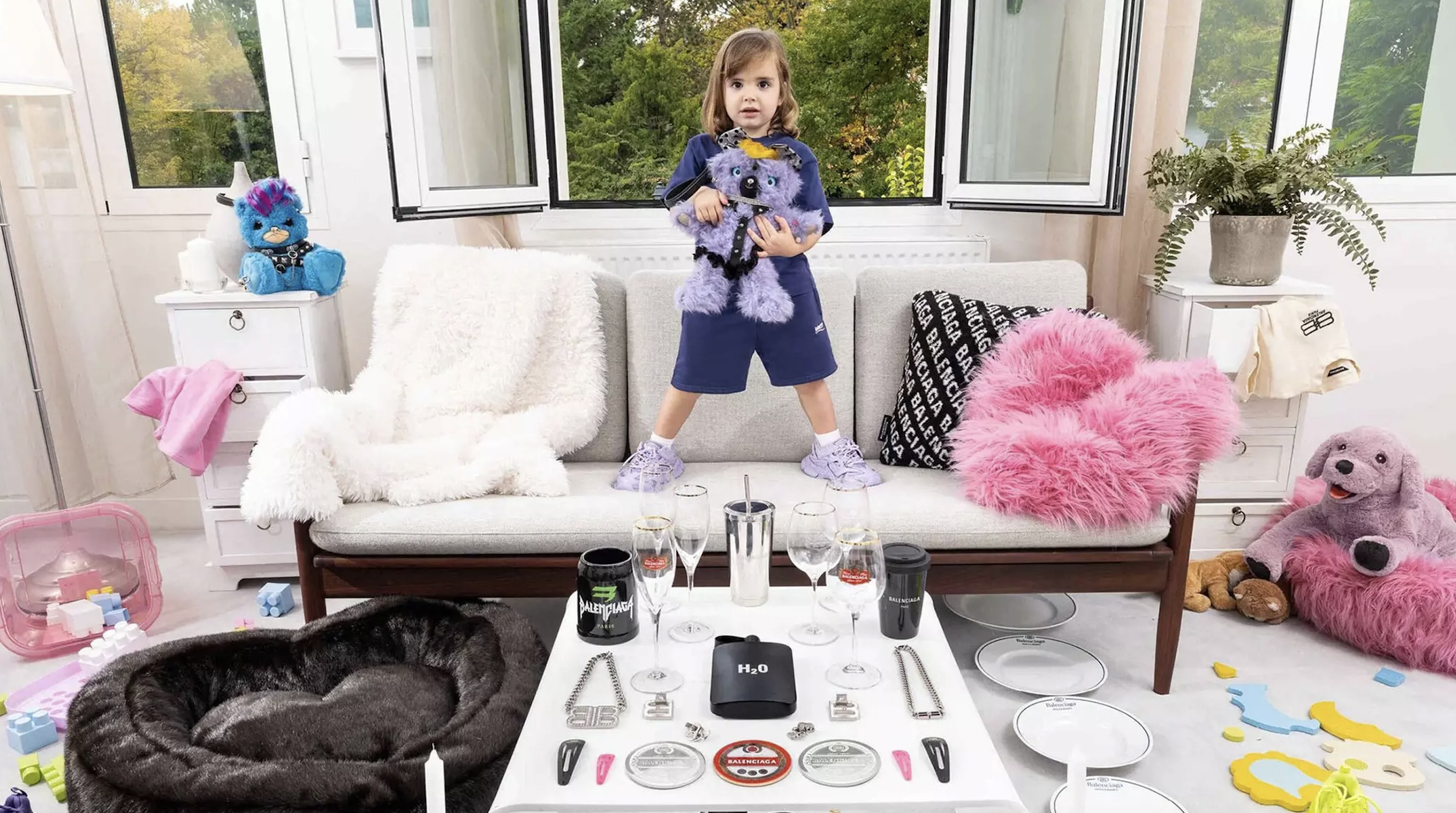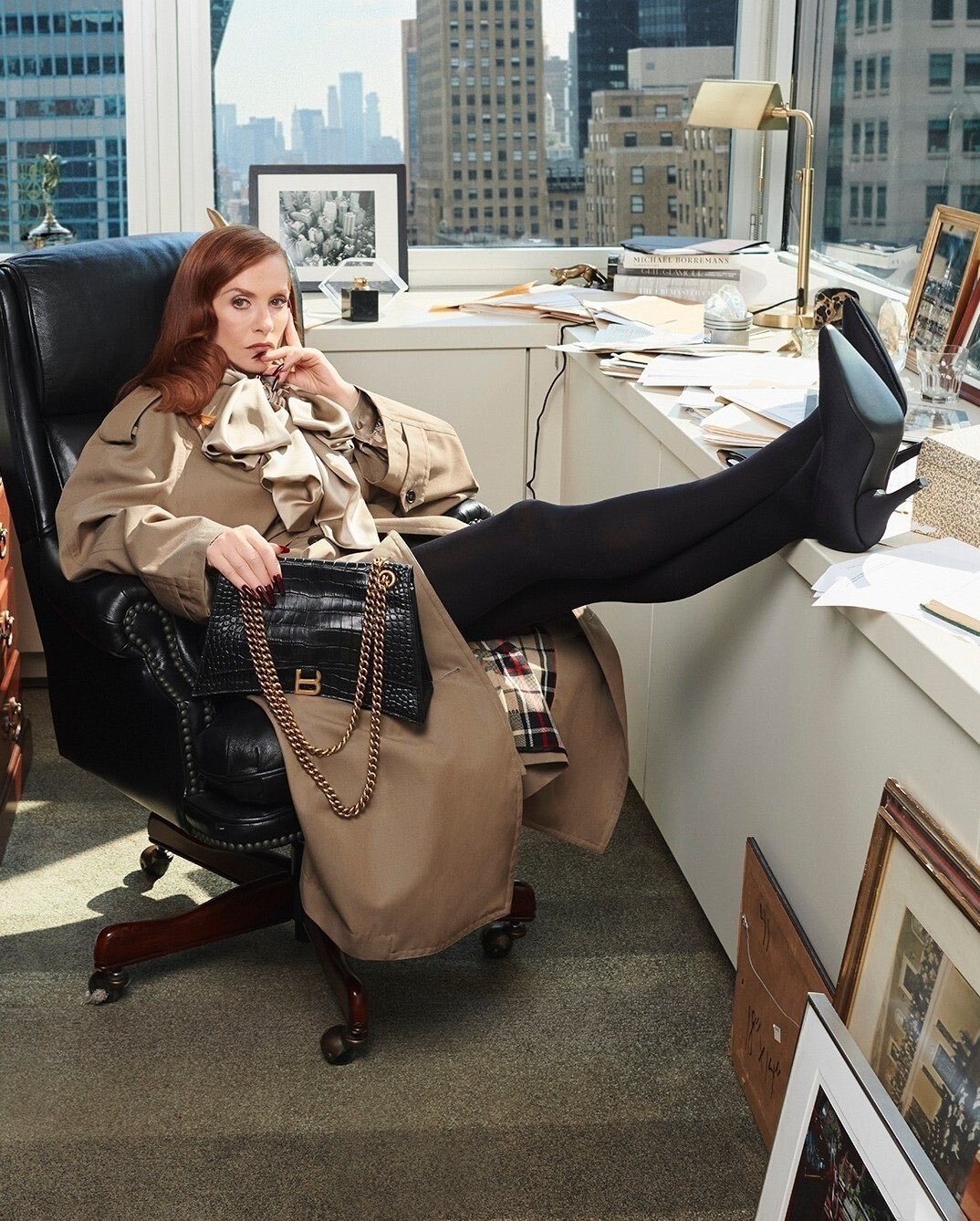Balenciaga’s Pedophile Campaign And The Sexualization of Children in Media
From designing Kim Kardashian’s face-concealing ensemble at the Met Gala to selling destroyed sneakers for 1,850 dollars, Balenciaga is no stranger to controversy. The “shock to sell'' marketing strategy has been implemented by the brand’s creative director, Denma Gvasalia, as a way to highlight their innovation and propel the company to new heights. Each controversy has further established the reputation of Denma’s Balenciaga as a company that pushes the boundaries of what fashion can be. Their latest scandal, however, has certainly not landed Baleciaga any success and has gone far past all boundaries. This past November, the Spanish luxury brand received astounding backlash after releasing two campaigns that many believe to have promoted the sexualization of children and pedophilia.
The first campaign that sparked outrage was a photoshoot for the brand’s Spring/Summer 2023 collection, titled “Balenciaga Gift Shop.” The disturbing photoshoot included six young children holding teddy bears wearing BDSM-esque bondage gear, featuring fishnet tights, leather harnesses, and chains. Also, one of the bears has a bruised purple eye, implying a strange connection between children, sex, and violence. The bondage imagery not only glorifies children's sexualization but also has eerie undertones of child abuse alongside BDSM.
Image: A close-up of the bears featured in Balenciaga’s “Gift Shop” campaign
The bear wasn’t the only issue, as the background design of the photos were also troubling. In a few images, the children were surrounded by adult-suggestive items such as wine glasses, beer koozies and duct tape. In one of the photos, the duct tape reads “BAALENCIAGA,” which many online made the connection to Baal: an ancient Canaanite deity to whom children were sacrificed to. Yikes. If this was just a simple misprint it would not have been included in the shoot, especially not the supposed “error” directly facing the camera. This instance highlights the intentionality of the various paraphernalia and that all of the items should be viewed as though they’ve been placed with purpose. Maintaining that mindset, some individuals online pointed out how nearly all of the set designs included a rabbit, which they believe is a reference to Alice in Wonderland, in which children lose their innocence and “go down the rabbit hole” of depravity and evil.
Five days after “Gift Shop” was published, Balenciaga released a separate “Garde-Robe” campaign, which was shot back in July, many months before the contentious Gift Shop photoshoot. Garde-Robe had an office workspace theme and featured the likes of Nicole Kidman, Bella Hadid, and Isabelle Huppert as models. The uproar from the first campaign led twitter users to discover disturbing background props in the seemingly innocuous office environment.
One of the images features a Balenciaga x Adidas handbag next to a printed-out Supreme Court case. Upon inspection, this case is 2008 U.S v. Williams, which examined whether laws banning the promotion of child pornography violated the First Amendment. Another visible portion of the document references Supreme Court case Ashcroft V. Free Speech Coalition, which concluded that the Child Pornography Prevention Act of 1996 violated free speech. A different photo displays the book “As Sweet as it Gets” by artist Michael Borremans. Twitter users discovered another one of Borremans’ works “Fire from the Sun” which depicts children running around naked, covered in blood, and holding severed body parts. An exhibition of Borremans’ works were featured in contemporary art gallery David Zwirner, who described the artwork as “toddlers engaged in playful but mysterious acts with sinister overtones and insinuations of violence.”
Image: Michael Borremann book present in the background of this Garde-Robe photo
Upon seeing the backlash from the public who burned their Balenciaga clothes and were calling for a “cancellation” of the company, Balenciaga deleted all of their instagram posts and issued a formal apology. The apology started by saying they “sincerely apologize for any offense our holiday campaign may have caused.” They continued, “Our plush bear bags should not have been featured with children in this campaign.” Later that day, a second apology was posted that addressed the Garde-Robe images, “We apologize for displaying unsettling documents in our campaign.” Balenciaga further into the apology announced that they were going to take “legal action against the parties responsible for creating the set and including unapproved items for our Spring ‘23 campaign photo shoot.” They concluded stating that they “strongly condemn abuse of children in any form. We stand for children’s safety and well-being.”
A week later, the fashion brand posted a longer apology to their instagram story, where they describe the two separate ad campaigns as “a series of grievous errors for which Balencaiga takes responsibility.” They also announced their steps moving forward, which includes “laying the groundwork with organizations who specialize in child protection and aims at ending child abuse and exploitation.” The full statement can be read below:
On December 2nd, creative director Denma took to instagram to issue his own apology, where he said, “I want to personally apologize for the wrong artistic choice of concept for the gifting campaign with kids and I take responsibility. It was inappropriate to have kids promote objects that had nothing to do with them. As much as I would sometimes like to provoke a thought through my work, I would NEVER have an intention to do that with such an awful subject as child abuse that I condemn. Period.” He continued, “I need to learn from this, listen and engage with child protection organizations to know how I can contribute and help on this terrible subject.” He then guaranteed that measures will be taken to “avoid similar mistakes in the future but also to take accountability in protecting child welfare in every way we can.”
Just over two months later, on February 9th Denma had his first interview since the incident, where he explained how “we should not have featured kids in images that included objects that were not related and inappropriate to them.” He then mentioned how this incident has changed his style of work that “had previously been more instinctive; doing something that would be seen as proactive just because I was thinking ‘Oh that’s fun.’ This is part of my learning. I will have a more mature and serious approach to everything I release as an idea or an image. I have decided to go back to my roots in fashion as well as to the roots of Balenciaga, which is making quality clothes – not making image or buzz.”
When questioned about his intentionality behind the photoshoot, the designer recognized his provocative nature, yet he noted that “this specific situation would never be a part of [it].” Denma felt that the most difficult thing for him was how unaware he was of the problem with the campaign in the first place, because “it is so clear to me now that it is the wrong thing to do.”
The day prior to this interview, Balenciaga announced a multi-year partnership with the National Children’s alliance. While this is a step in the right direction, it will certainly take a long time to get consumers’ trust back.
Whatever Balenciaga’s intentions were, their campaigns only point to a bigger problem in society that various mediums promote child sexualization. Entertainment such as music videos, movies, fashion, magazines, and social media all play a role in exposing young kids to sexual themes and imagery.
In the realm of fashion there are plenty of ways young children, especially girls, are made conscious of sexuality. Advertising and marketing agencies recognize that in our society sex makes money and representing children in a sexual manner gains attention and sells products. There are numerous photo editorials portraying pre-adolescent girls as heavily sophisticated, wearing layers of makeup and revealing clothing. One example of this is the Australian magazine company “Haven For Families” featuring a nine year old girl wearing a two piece outfit, posing in a suggestive way. Another popular publication is the Barbie Magazine, which for years has had a lot of their content be sexualized material. In terms of products, there is clothing made for elementary school-aged kids with sexual phrases such as “Wink Wink” or “Eye Candy” that are targeted for kids, as well as for adults to buy for children. Dolls marketed at little girls are becoming increasingly sexualized, often wearing revealing and skimpy clothing such as short skirts and fishnet stockings, which encourages the children to follow suit. And all of these examples don’t account for the beauty pageant system, which creates a young girl’s sense of worth on their physical appearance.
Another harmful medium is social media — in particular TikTok. Where young girls are following dancing “trends” which typically feature suggestive music such as Cardi B’s WAP. Curious kids are easily impressionable and want to follow what adults are doing. Adults have a responsibility in recognizing that their actions will influence the young generation.
In terms of cinema, the French film Cuties – which gained traction after being acquired by Netflix – attempts to display the difficulty young girls have navigating a world in which they are heavily sexualized, yet the movie itself participates in the same hyper-sexualization it attempts to critique. The film’s cast consists of mainly preteen girls who perform provocative dance moves such as twerking, while wearing little clothing. The unnecessary amount of explicit scenes in the movie ends up glamorizing the suggestive actions from the children.
Shows Riverdale and Euphoria, some of the most popular teen high school shows out currently, and are also part of the problem. While the actors are adults (thankfully), the characters who are supposed to be around 14 - 17 are needlessly sexualized. For example, the scene in Riverdale where one of the characters strips and dances on a stripper pole, and also when Euphoria character Kat becomes a “cam girl,” performing sexual deeds on live video for money, are just a few of many examples of the shows making the viewers watch “teengagers” act in a sexual manner.
A research study published in Sex Roles sought to examine how prevalent sexualization was in children’s television programs. The researchers viewed 32 episodes of children aged 6 - 11’s favorite TV shows, they found that sexualization was present in every episode, and that there was a combined total of 770 instances across all episodes.
The American Psychological Association found that “sexualization is associated with significant negative consequences for girls including mental health disorders, low self-esteem, body issues, and impaired cognitive performance.” Sexualization of girls also impacts boys, according to Psychologist Christia Spears Brown at the University of Kentucky stated that “the more boys buy into stereotypical presentations of females, the more apt they are to accept sexually harassing girls as normal behavior.”
All of these forms of media build a system that sexualizes children from all angles, and instills the value that worth is based on outside appearance rather than who they are as people. The more we see this sexualization we become desensitized and eventually it becomes normalized in society. Eliminating this sexualization should be a top priority, and advocate and fight for the removal of sexual themes being targeted towards kids. Just like in the Balenciaga situation, if enough people speak out, change is bound to occur.








